Modera Falls Chruch
- 72 units available
- Studio • 1 bed • 2 bed
- Amenities
In unit laundry, Patio / balcony, Dishwasher, Pet friendly, New construction, 24hr maintenance + more

Virginia is one of the most vibrant places to live in the United States. Here, the cost of living is about 4.2% higher than the national average. Still, many find this worthwhile due to the state’s unique blend of history, job opportunities, and abundant natural beauty.
From beachfront boardwalks in Virginia Beach to the skyline views in Richmond and the rich naval heritage of Norfolk, each of the state’s largest cities offers its own style of urban living. You’ll also find quieter suburban communities and pretty mountain towns that deliver a slower pace without losing access to daily conveniences.
In this guide, we’ll highlight Virginia’s largest cities and what makes each unique. Whether you’re drawn to coastal living, lively downtown areas, or quieter suburban neighborhoods, we’re here to help you find the perfect place in Virginia to call home.
Note: All of the rental data included here comes from Apartment List's internal database of rent estimates, which is available for download. Transit scores come from Walk Score, and census information comes directly from the U.S. Census Bureau.
Virginia Beach is an East Coast gem, perfect for those who love the ocean and a relaxed yet active lifestyle. The largest city in Virginia boasts miles of sandy beaches, including the famous Oceanfront, with its lively boardwalk lined with restaurants, shops, and entertainment.
For nature lovers, First Landing State Park and Back Bay National Wildlife Refuge have trails, kayaking opportunities, and diverse wildlife experiences. The job market here is centered on tourism, military-related industries, and healthcare, with support from employers such as Sentara Healthcare and Joint Expeditionary Base Little Creek-Fort Story.
Families often choose neighborhoods like Ocean Lakes, known for its strong schools, such as Ocean Lakes High School, while Shore Drive is popular for its nightlife, waterfront dining, and stunning bay views. For renters, Virginia Beach offers that rare mix of beach-town living with the amenities of a major city.
Getting around: Public transit is limited (Hampton Roads Transit buses serve the city, but no light rail), so most residents rely on cars; commutes into nearby Norfolk can take 25 to 40 minutes, depending on traffic.
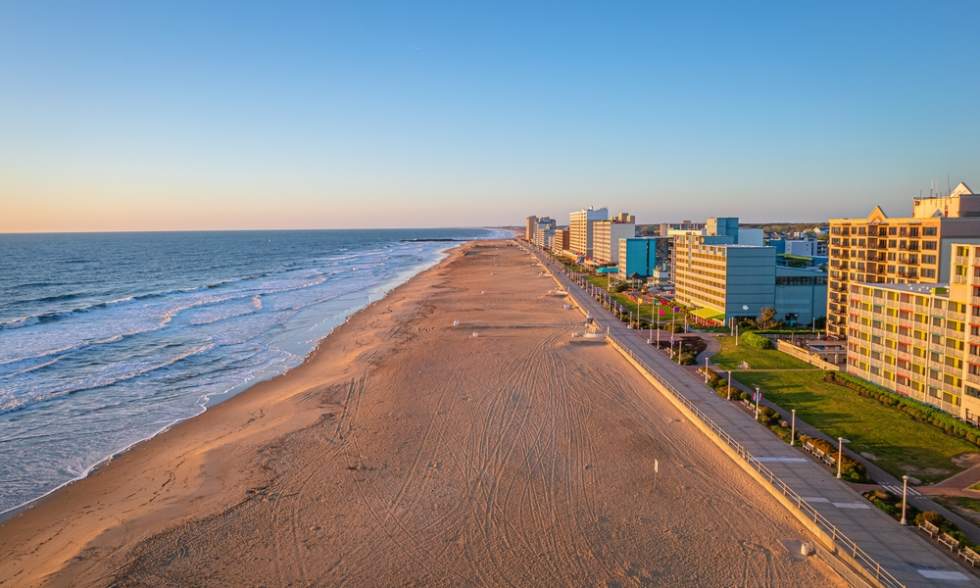
Chesapeake is one of Virginia’s most prominent cities, offering a suburban feel with modern amenities and a touch of nature.
Known for the Great Dismal Swamp National Wildlife Refuge, this city offers numerous green spaces and outdoor activities. The area also boasts a strong job market in logistics and agriculture, with the corporate headquarters of Dollar Tree and an Amazon processing facility nearby.
There are excellent schools, such as Grassfield High School, and family-friendly neighborhoods like Hickory and Greenbrier. Shopping and dining cluster around the Towne Place at Greenbrier, with locals favoring spots like The Butcher’s Son or Taste Unlimited.
With its mix of affordability, outdoor access, and family-friendly amenities, Chesapeake appeals to those who want suburban comfort with pockets of nature.
Getting around: Chesapeake is spread out, so driving is essential. Its transit score of 14 indicates that nearly all errands need to be done by car. For renters, it’s about a 20- to 30-minute commute into Norfolk or Virginia Beach by car.
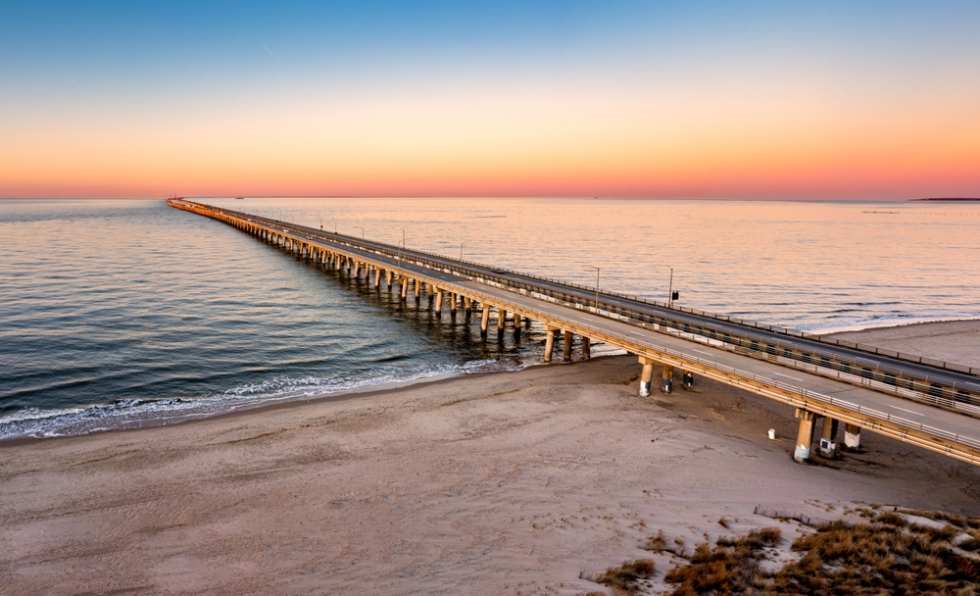
Home to the world’s largest naval base, Naval Station Norfolk, Norfolk has long been renowned as a vibrant port city with a rich maritime heritage and a thriving arts and culture scene. It’s a city that offers numerous military and defense-related job opportunities, as well as thriving tech and business communities.
For renters, Norfolk is a desirable option due to its cultural highlights and convenient location. The Chrysler Museum of Art and the Waterside District are must-visit spots, while restaurants like Freemason Abbey and No Frill Bar and Grill are longtime favorites.
If you’re looking to live in the heart of the city, Downtown Norfolk is highly walkable (walk score 80) and packed with amenity-rich apartments close to nightlife, music venues, and waterfront views. With its mix of history, jobs, and lively vibe, Norfolk stands out as one of Virginia’s liveliest big cities.
Getting around: Aside from Downtown being very walkable (walk score 80), the city offers Tide Light Rail access and Hampton Roads Transit bus service, making it more transit-friendly than other cities. Commutes to Virginia Beach and Chesapeake are via Interstates 264 and 464, respectively.
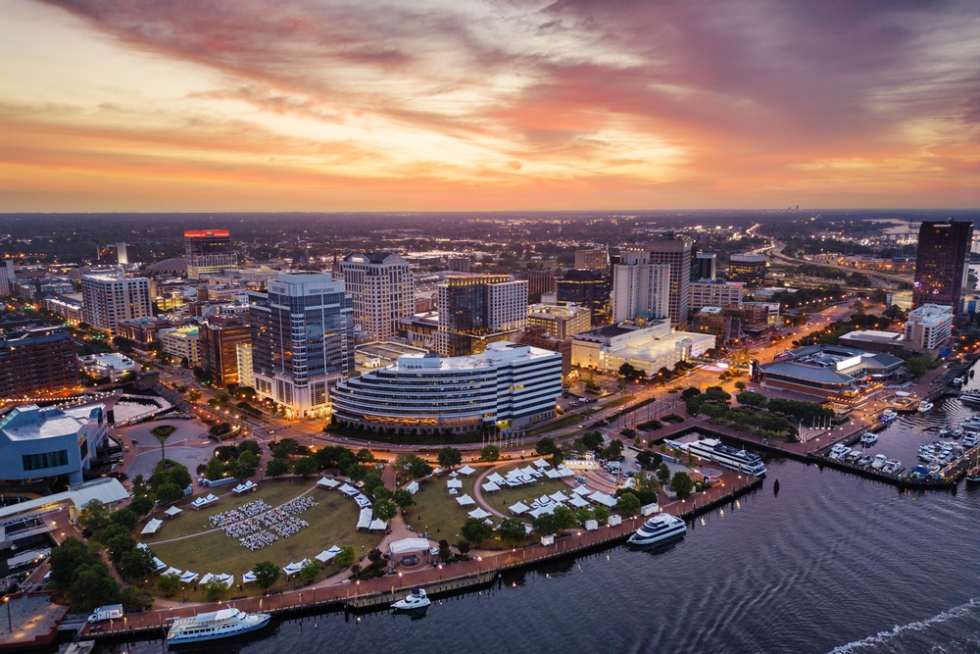
Richmond is one of many Virginia cities steeped in history that has evolved over the years with modern amenities in a way that few cities can. As the former capital of the Confederacy, it’s home to landmarks like the Virginia State Capitol, designed by Thomas Jefferson, and the American Civil War Museum.
But the city isn’t just about the past. Today is a hub for government, finance, law, and healthcare, with Capital One, Dominion Energy, and VCU Health anchoring a diverse job market. Compared to D.C. or northern Virginia, it offers a similar balance of career opportunities and cultural life, but with more affordable housing.
For renters, Richmond’s neighborhoods offer plenty of variety. Carytown is known for its indie shops, local eats, and the Byrd Theatre, while the Fan District charms with tree-lined streets and historic rowhouses. For dining, there are local favorites like L’Opossum and Heritage, plus a thriving craft beer and coffee culture.
Outdoor lovers also find plenty to do along the James River Park System, where trails, rapids, and kayaking spots run right through the city. It’s a place where families and young professionals alike find a very livable combination of history, community, and creativity.
Getting around: Richmond offers Greater Richmond Transit Company Pulse bus rapid transit through Downtown and the Fan District, but most residents still drive. Commutes around the metro typically take 20 to 35 minutes by car.
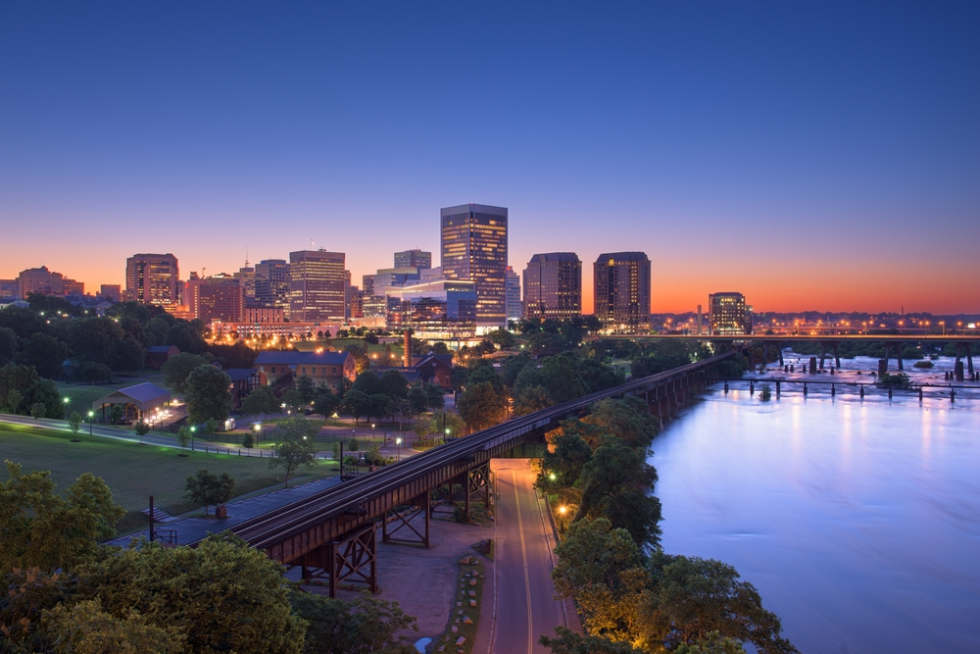
Newport News is a hub for shipbuilding and maritime industries, with Huntington Ingalls Industries as one of the largest employers in the area. The city also offers opportunities in education and healthcare, supported by Christopher Newport University and Riverside Health System.
Beyond jobs, Newport News appeals to renters looking for outdoor space and community. Newport News Park, one of the largest municipal parks in the country, offers more than 30 miles of hiking trails, boating, and camping, while the Mariners’ Museum and Park connects residents to the area’s maritime history.
Families enjoy a strong school system and family-friendly neighborhoods, while the City Center at Oyster Point serves as a lively hub for shopping, dining, and year-round events.
Getting around: While Hampton Roads Transit and local buses are available, most still commute by car. It’s a 15- to 20-minute drive to Hampton and a 30- to 45-minute drive to Norfolk.
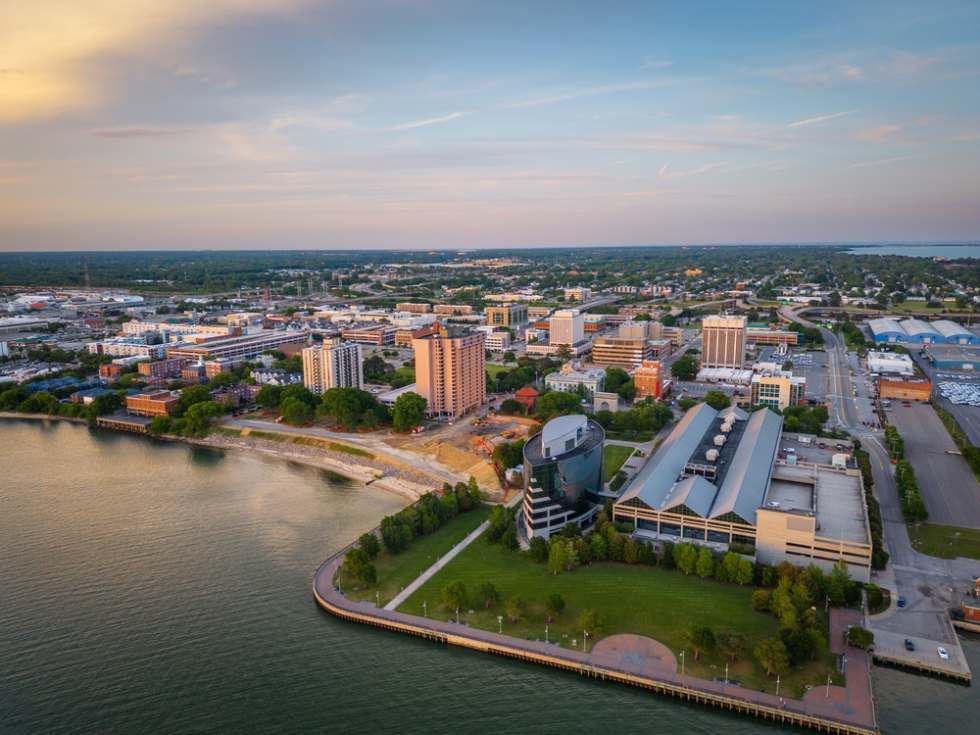
Renowned for its cobblestone streets, waterfront dining, and boutique shopping, Alexandria combines historic charm with modern conveniences, making it one of the most desirable places to live near Washington, D.C. The Old Town area features destinations such as the Torpedo Factory Art Center, while the 18th- and 19th-century rowhouses give the area a unique blend of old and new.
The city attracts professionals working in the federal government and tech. Alexandria City Public Schools, including the renowned Thomas Jefferson High School for Science and Technology, provide excellent educational options.
Outdoor access is another draw. The Mount Vernon Trail is great for scenic biking and jogging along the Potomac River, while nearby National Harbor provides dining, shopping, and entertainment conveniences.
Getting around: Thanks to its proximity to Washington, D.C., Alexandria is well connected by public transit with multiple Metrorail stations (Blue and Yellow lines), Virginia Railway Express commuter rail, and buses. Commutes into Downtown D.C. can be under 30 minutes by train.
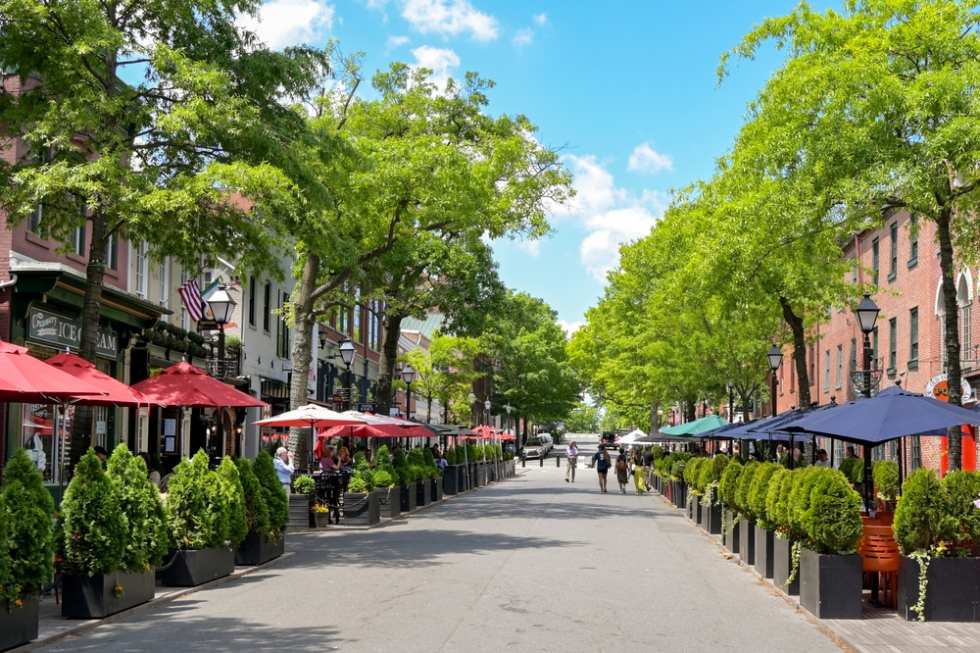
Hampton is home to Langley Air Force Base and NASA Langley Research Center, making it a hub for aerospace and military jobs.
Families are drawn to Hampton for its community-focused neighborhoods and attractions, such as Sandy Bottom Nature Park and the Virginia Air and Space Science Center. Head to historic Phoebus, and you’ll find plenty of unique shops and restaurants like Mango Mangeaux.
To top it all off, housing remains relatively affordable, and the area has access to strong public schools, making it an excellent choice for both families and young professionals seeking value near the coast.
Getting around: Driving is the easiest way to get around, but Hampton Roads Transit provides bus service to the city. Commuting across the Hampton Roads Bridge Tunnels can be congested during peak hours, with an average travel time of 30 to 45 minutes.
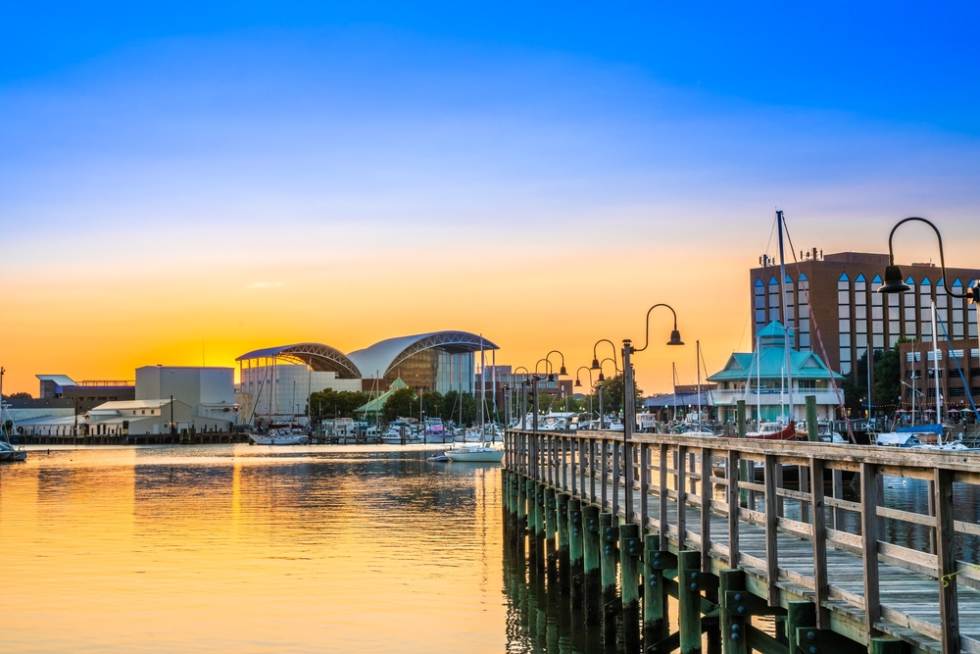
Set in the foothills of the Blue Ridge Mountains, Lynchburg lets residents live a slower pace of life. Known as Hill City, it blends history with a growing cultural scene.
Downtown has been revitalized in recent years with cafés, boutiques, and breweries like Hill City Pub. Just minutes away, the James River and trails like the Blackwater Creek Trail offer easy hiking, biking, and kayaking escapes.
On the job front, Liberty University and Centra Health are two major employers. More recently, BWX Technologies and Framatome (two of the nation’s large-scale nuclear companies) have set up headquarters there, adding high-skilled jobs in the nuclear energy and engineering sector, giving Lynchburg more economic diversity than many small metros.
For renters, housing remains far more manageable than in larger Virginia cities, making it attractive to students, young professionals, and families who want small-city charm with outdoor access and a strong sense of community.
Getting around: The Greater Lynchburg Transit Company runs local buses, but most residents depend on cars. Car-based commutes are short, often under 20 minutes across town.
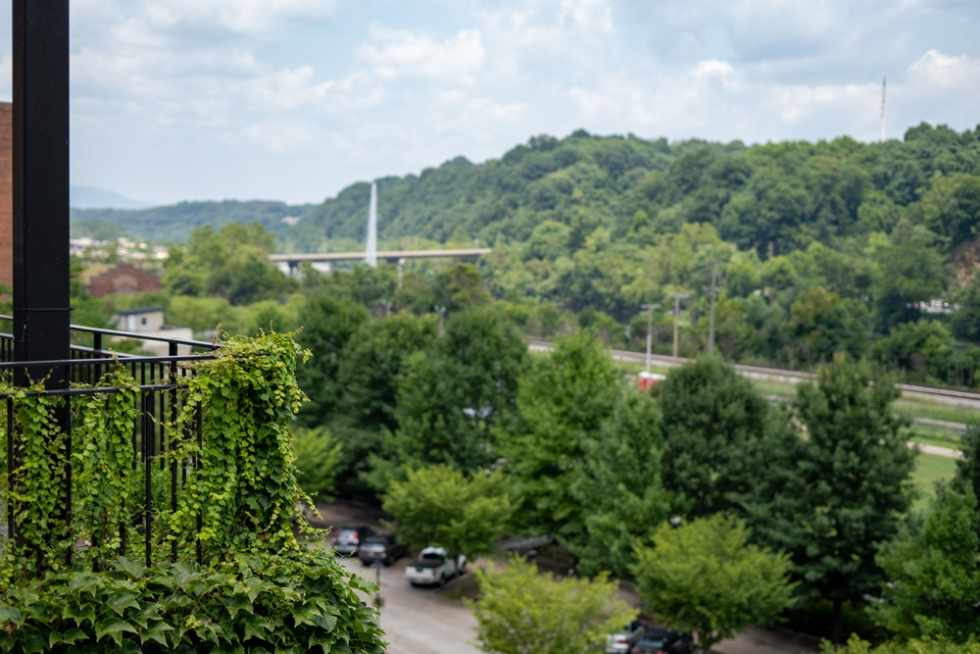
Charlottesville is a cultural and intellectual hub, thanks to the University of Virginia and its legacy as the home of Thomas Jefferson. UVA Health is a major employer, alongside tech firms like WillowTree and healthcare providers such as Sentara Martha Jefferson Hospital.
The Downtown Mall is one of the longest pedestrian shopping streets in the country, lined with restaurants, theaters, and boutiques. On weekends, locals and visitors head to nearby wineries, cideries, and craft breweries, or catch events like the Virginia Film Festival and concerts at Ting Pavilion.
Plus, the city has some of the most scenic neighborhoods in the state, with the Blue Ridge Mountains providing a stunning backdrop for outdoor activities where hiking, apple picking, and scenic drives are all within minutes’ reach.
Getting around: Charlottesville Area Transit buses serve the city, and the Amtrak station provides regional rail connections to D.C. in just over two hours.
)
Blacksburg is best known as the home of Virginia Tech, giving it a vibrant college-town atmosphere. The university drives the local economy, offering jobs in education, research, and tech innovation. Private employers, including motion-control company Moog Inc., healthcare institutions such as Montgomery Regional Hospital, and numerous startups at the Virginia Tech Corporate Research Center (CRC), offer ongoing job opportunities.
For a relatively large city, Blacksburg has a tight-knit feel, with farmers markets, Hokies football, and cafés like Mill Mountain Coffee and Tea bringing the community together. Outdoor recreation is also abundant, with the Huckleberry Trail and Cascade Falls nearby. All in all, you really can’t beat the mix of affordable housing and quality schools.
Getting around: Despite a transit score of 38, Blacksburg Transit provides local bus service, making it one of the few smaller cities where residents can go without a car.

Manassas blends small-town charm with urban accessibility. In its historic downtown, you’ll find many boutiques, cafés like Jirani Coffeehouse, and cultural attractions like the ARTfactory Creative Arts Center. On Saturday, the Historic Manassas Farmers Market draws more than 100 vendors, making it one of the region’s most popular markets.
Thanks to Manassas’ location, many residents commute to D.C. or northern Virginia for government and contracting jobs, with the Virginia Railway Express (VRE) commuter rail making the daily trip easier.
For families, there are many strong schools and parks, such as Signal Hill, which offers hiking trails and sports facilities. Manassas is also known for its historical significance, with the Manassas National Battlefield Park providing a window into Civil War history.
Getting around: The city has a VRE commuter rail into D.C. and OmniRide buses, which are popular with federal workers. Driving via Interstate 66 into D.C. often takes an hour or more.
)
On the up-and-up is Danville, which is reinventing itself from its tobacco and textiles roots. \ \ With a growing River District refreshed with loft apartments, local shops, and eateries like Mucho Taqueria, while the new Caesars Virginia resort brings jobs and entertainment right to the city center. Additionally, employers like Microporous, WB Alloys, Averett University, and the Institute for Advanced Learning and Research are providing the city with a mix of new and steady employment opportunities.
Overall, the city offers a slower pace of life, with plenty of outdoor activities at the Riverwalk Trail and Anglers Park. Plus, the affordable cost of living and growing downtown area make it an attractive option for those seeking a quieter lifestyle.
Getting around: While driving is still the best way to get around, Danville’s mass transit system provides limited bus service in the area.
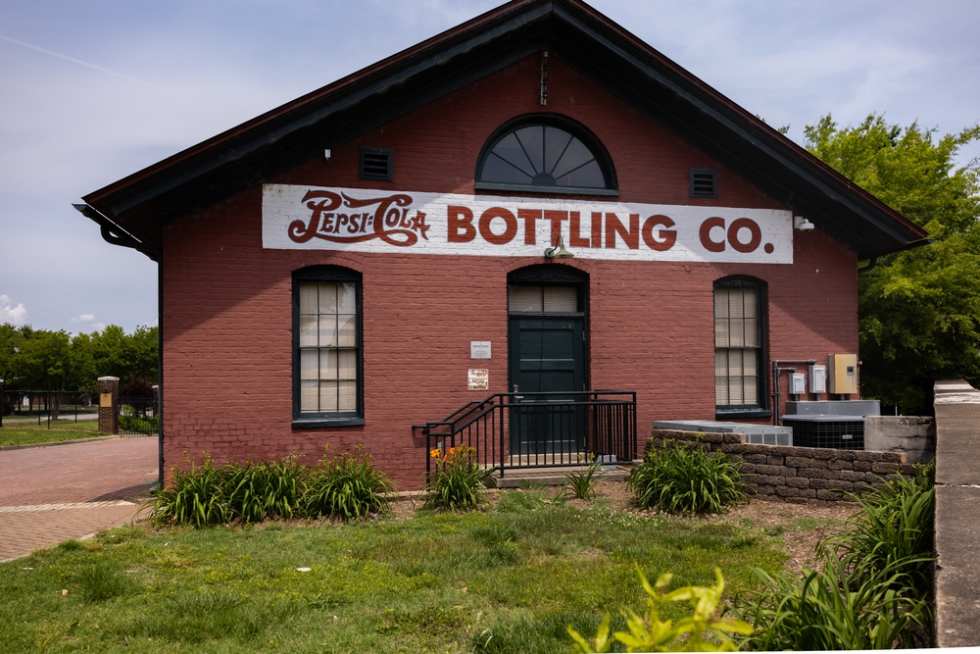
Now that you have an overview of the largest cities in the state of Virginia, you can see how much the state has to offer. Whether it’s history in Richmond, coastal living in Virginia Beach, or walkable neighborhoods near D.C., each city offers a thriving job market, excellent schools, and a variety of activities, from hiking to enjoying the arts.
If you're considering a move to one of Virginia’s bustling cities, finding the right apartment is the first step. Use the personalized Apartment List quiz to easily browse apartments by budget, neighborhood, and lifestyle preferences so you can start enjoying all that Virginia has to offer right away. With us, you’ll spend five minutes and save 50 hours searching.
The top three cities in Virginia by population are:
Virginia Beach is the largest city in the state, with a population approaching 460,000 as of the 2020 census. It’s known for its oceanfront boardwalk, family-friendly neighborhoods, and strong military presence.
Thanks to the world’s largest naval base, a major shipping port, and its downtown cultural scene, Norfolk is the busiest city in Virginia.
Lynchburg and Blacksburg have the lowest average two-bedroom monthly rents at around $1,275 and $1,395, respectively, making them a good fit for wallet-conscious renters.
Manassas and Alexandria top the list with household incomes above $110,000, in part due to their proximity to Washington D.C. and desirable tech and government jobs.
Virginia has a progressive income tax system from 2.00% to 5.75%. The top rate of 5.75% applies to taxable income over $17,000.
Yes. Virginia’s sales tax rate is 4.30%, with an additional 1% mandatory local tax.


In unit laundry, Patio / balcony, Dishwasher, Pet friendly, New construction, 24hr maintenance + more
In unit laundry, Golf room, Patio / balcony, Granite counters, Hardwood floors, Pet friendly + more